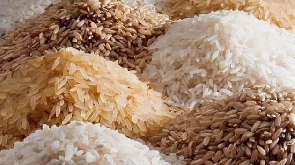High labour costs and huge import duties on inputs and machinery remain major challenges faced by rice producers in the country.
There is high demand for the domestically produced rice but due to the afore-mention challenges, they are unable to produce in large quantities to meet demand.
Consequently, producers of the grain have appealed to the government to help create a conducive environment that will make production and processing easier, which they believe will, in return, increase production to meet the rising demand.
According to them, if the government can reduce taxes on imported inputs, such fertiliser and machinery, along with access to bank loans at reasonable rates, it will go a long way to improve productivity.
Rice is one of the most staple foods consumed locally, but domestic production accounts for only one third of consumption. Statistics from the Ministry of Food and Agriculture (MoFA) indicate that between 2008 and 2020, paddy rice production was in the range of 302,000 metric tonnes (mt) and 987,000 mt and 181,000 to 622,000mt of milled rice, with annual fluctuation and the total rice consumption in 2020 amounting to about 1,450,000mt, which is equivalent to per capita consumption of about 45kg per annum.
However, available data from the Observatory of Economic Complexity (OEC) suggests that in 2020, Ghana imported US$391million worth of rice, becoming the 20th largest importer of the grain in the world. The country imports primarily from four countries: Vietnam, US$282million; Thailand, US$45.5million; India, US$27.3million; and China, US$5.95million.
Unquestionably, Ghana’s immense interest in importation, including rice, adversely affects local production, the domestic currency, jobs and the general economy.
Nonetheless, acknowledging the rise in demand for local rice in recent times in an interview with the B&FT, Mark Ademin, Manager of Achaabwen Enterprise – producers of Maxim rice in Fumbisi in the Upper East Region of Ghana, indicated that increased awareness and the modernised and improved ways of production have played a major role in increasing demand for local rice.
For instance, Achaabwen produced 14,000 bags of 25kg of both white and brown rice in June to December last year, but all has been bought, he says.
Janet Adade, a rice producer in the Oti Region, suggested that unstable exchange rates, health concerns and patriotism are contributing to the rise in demand.
She revealed that many diabetic patients, overweight individuals, and people living with stroke patronise a lot of her products, including brown rice, because it has less starch, rich in nutrients, and aids in healing the mentioned ailments.
Due to the improved processing and the use of de-stoner machines to remove stones from paddy rice during production, farmers no longer have to keep rice for years before distributing, resulting in rice that is fresh and tastes natural.
However, Ms. Adade bemoaned the lack of irrigation infrastructure, high costs of agro inputs like fertilisers and weedicides, among others, as major problems affecting rice farmers.
Sheila Cornelius, owner of Cornelius Farms and producer of Okorewaa Ghana rice, also attributed the rise in demand to increased awareness, a change in public perception, unfavourable exchange rate leading to increases in the price of imported rice, and improved packaging of locally-made rice.
She indicated that in 2021 and 2022, she cultivated 10 acres, which yielded 200 of 50kg bags. In 2023, however, she had to reduce her farm to 5 acres due to high input and labour costs even though demand is high.
“There is a lot of demand for local rice, but due to high labour costs and poor road network, we had to reduce the number of acres this year,” she lamented.
Ms. Cornelius, however, believes that the government can play a major role in helping ease the obstacles faced by players in the rice value chain.
Similarly, Daniel Amawiak Akanko, a distributor of Maxim rice in the Northern Region, called on the government to pay attention to roads in towns where rice production takes place.
“Due to bad road networks, deliveries that can be done in a day can take 2-3 days,” he fumed, adding: “Sometimes, our tracks breakdown due to the bad nature of the roads. When this happens, we end up spending days to either fix it or get another track for the loads”.
Business News of Wednesday, 12 April 2023
Source: thebftonline.com













